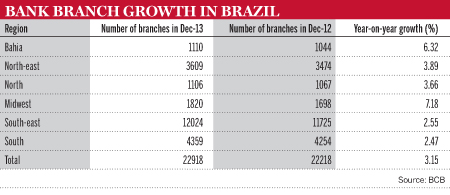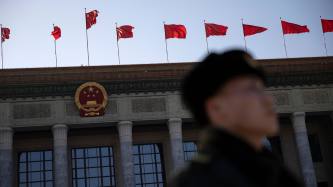With this year’s annual meeting of the Inter-American Development Bank being held at Costa do Sauípe, a seaside resort in the state of Bahia in the north-east of Brazil, economic and financial sector data shows that the area is outperforming much of the rest of the country.
Editor's choice
More on Brazil
- São Paulo leads Latam financial FDI inflows but Caracas tops outflows list
- How Fed tapering has affected Argentina, Brazil and Chile
- Brazil's poor economic data belies growth potential
- Top Latin American banks ranking, 2012
- Itaú BBA maintains a local focus
- How will Brazil's private banks see off multiple challenges?
The fourth most populous state in Brazil, and home to former capital Salvador, Bahia had been expected to grow at a similar pace to the whole country in the next few years, according to research by Itaú Unibanco. As fresh national data points to a technical recession for Brazil – the country’s gross domestic product (GDP) shrank by 0.2% in the final two quarters of 2013 – it is not clear whether Bahia will follow a similar fate. Before it announce its data on the national GDP figures, Itaú had anticipated that Bahia’s GDP would grow at an average of 1.8% for the period between 2011 and 2015, and then at an average of 2.6% between 2016 and 2020.
The state’s main economic sectors are shoe manufacturing, food and drink production, mining, automotive and petrochemical-related products, and Bahia’s economic projections are largely based on investments in those sectors. Another potential economic boost for the state will come when Salvador hosts some of the FIFA Football World Cup games in June and July this year, bringing with it infrastructure improvements and an increase in tourism numbers.
Investments in infrastructure have benefited the local economy in the past. Once considered to be among the worst in Brazil, the Port of Salvador has been transformed in the past decade and has now doubled in capacity. Meanwhile, foreign direct investment into Bahia over the past three years has been worth just under $6bn, according to greenfield investment monitor fDi Markets, and was mainly captured by the metals, automotive and food sectors.
In banking terms, Bahia is relatively well populated and inclusive. Almost one-third of the bank branches in north-eastern Brazil are based in Bahia. Although high in absolute terms, at more than 30%, the percentage of municipalities without a bank branch is still below the national average.
In south-east Brazil, which includes São Paulo, the most developed state in banking terms, only 23% of municipalities are without a branch. That figure more than doubles to 47% for the north-east region – the worst performer in the country, according to Brazil’s central bank. Credit operations and deposits are close to the bottom of the list for the north-east region too, with 7.5% and 5.4% of national total, respectively.
While all large domestic lenders have a presence in Bahia, the most visible local bank is Salvador-based Banco BBM, which at the end of 2012 had $263m in Tier 1 capital, according to the Banker Database.














